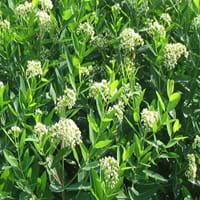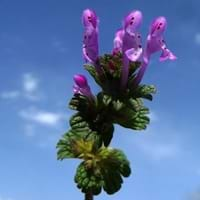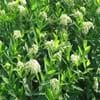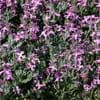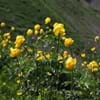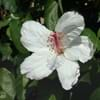Type
Flowering Plants, Herbs, Shrubs
Herbs
Origin
Southern Asia, India
Eastern Europe, Southern Europe, Mediterranean, Northern Africa, Central Asia, Western Asia
Types
Crotalaria benghalensis Lam.
Crotalaria fenestrata Sims
Crotalaria ferestrata Sims
Crotalaria porrecta Wall.
Crotalaria sericea Willd.
Crotalaria tenuifolia Roxb.
Crotalaria viminea Wall.
Not Available
Number of Varieties
Not Available
Habitat
Mountain tops, Temperate Regions, Terrestrial
Cultivated Beds
USDA Hardiness Zone
8-11
Not Available
AHS Heat Zone
12 - 4
12 - 1
Sunset Zone
H1, H2, 3a, 3b, 4, 5, 6, 7, 8, 9, 10, 11, 12, 13, 14, 15, 16, 17, 18, 19, 20, 21, 22, 24
Not Available
Habit
Oval or Rounded
Prostrate/Trailing
Flower Color
Yellow, Gold
Hot Pink, Fuchsia, Violet
Flower Color Modifier
Bicolor
Bicolor
Fruit Color
Black
Not Available
Leaf Color in Spring
Light Green, Gray Green
Green, Purple, Gray Green
Leaf Color in Summer
Light Green, Gray Green
Green, Purple, Gray Green
Leaf Color in Fall
Light Green, Gray Green
Green, Purple, Gray Green
Leaf Color in Winter
Light Green
Light Green
Plant Season
Spring, Summer, Fall, Winter
Spring, Fall, Winter
Sunlight
Full Sun, Partial Sun
Full Sun, Partial Sun, Partial shade, Full Shade
Growth Rate
Very Fast
Fast
Type of Soil
Clay, Loam, Sand
Clay, Loam, Sand
The pH of Soil
Neutral
Acidic, Neutral, Alkaline
Soil Drainage
Well drained
Average
Bloom Time
Indeterminate
Early Spring, Spring, Late Spring, Early Summer, Fall, Late Fall, Early Winter
Tolerances
Drought
Not Available
Where to Plant?
Ground, Pot
Ground
How to Plant?
Seedlings
Divison, From Rhizomes, Layering, Seedlings
Plant Maintenance
Medium
Low
Watering Requirements
Does not require lot of watering, Requires watering in the growing season
Water occasionally
In Summer
Lots of watering
Lots of watering
In Spring
Moderate
Moderate
In Winter
Average Water
Average Water
Soil pH
Neutral
Alkaline, Neutral, Slightly Acidic, Slightly Alkaline
Soil Type
Clay, Loam, Sandy
Dry
Soil Drainage Capacity
Well drained
Dry
Sun Exposure
Full Sun, Partial Sun
Full Sun, Partial shade
Pruning
Cut or pinch the stems, Remove damaged leaves, Remove deadheads, Shape and thin as needed
Remove damaged leaves, Remove dead branches, Remove dead leaves
Fertilizers
All-Purpose Liquid Fertilizer
Not Available
Pests and Diseases
Insects, Moth, Red blotch
Not Available
Plant Tolerance
Drought
Not Available
Flower Petal Number
Single
Single
Fragrant Bark/Stem
No
Yes
Foliage Texture
Fine
Medium
Foliage Sheen
Matte
Matte
Attracts
Not Available
Bees, pollinators
Allergy
no allergic reactions
Anti-inflammatory, Antimicrobial, Antioxidants, Flavonoids
Aesthetic Uses
Not Used For Aesthetic Purpose
Beautification, Cottage Garden, Showy Purposes
Beauty Benefits
Not Available
Not Available
Environmental Uses
Air purification
Not Available
Medicinal Uses
Antispasmodic, Cold, Cough, Diarrhea, Digestive disorders, Jaundice, Liver problems, Urinary tract problems, Wounds
Antirheumatic, Diaphoretic, Febrifuge, Laxative
Part of Plant Used
Fruits, Leaves
Flowers, Leaves, Stem
Other Uses
Culinary use
Used As Food
Used As Indoor Plant
No
No
Used As Outdoor Plant
Yes
Yes
Garden Design
Edging
Edible
Botanical Name
Apocynum cannabinum
LAMIUM amplexicaule
Common Name
Dogbane, milkweed, honeybloom, bitter root, black
hemp, hemp dogbane, lechuguilla, westernwall
Henbit, Henbit Deadnettle
In Hindi
भारतीय गांजा
henbit deadnettle
In German
Indischer Hanf
henbit deadnettle
In French
chanvre indien
henbit deadnettle
In Spanish
El cáñamo indio
deadnettle henbit
In Greek
ινδική κάνναβη
αυλακόχορτου deadnettle
In Portuguese
cânhamo indiano
henbit deadnettle
In Polish
Konopie indyjskie
Henbit jasnota
In Latin
Latin Hemp
henbit deadnettle
Phylum
Not Available
Magnoliophyta
Class
Not Available
Magnoliopsida
Family
Fabaceae
Lamiaceae
Clade
Angiosperms, Eudicots, Rosids
Angiosperms, Asterids, Eudicots
Tribe
Crotalarieae
Not Available
Subfamily
Faboideae
Not Available
Season and Care of Indian Hemp and Henbit Deadnettle
Season and care of Indian Hemp and Henbit Deadnettle is important to know. While considering everything about Indian Hemp and Henbit Deadnettle Care, growing season is an essential factor. Indian Hemp season is Spring, Summer, Fall and Winter and Henbit Deadnettle season is Spring, Summer, Fall and Winter. The type of soil for Indian Hemp is Clay, Loam, Sand and for Henbit Deadnettle is Clay, Loam, Sand while the PH of soil for Indian Hemp is Neutral and for Henbit Deadnettle is Acidic, Neutral, Alkaline.
Indian Hemp and Henbit Deadnettle Physical Information
Indian Hemp and Henbit Deadnettle physical information is very important for comparison. Indian Hemp height is 90.00 cm and width 90.00 cm whereas Henbit Deadnettle height is 7.60 cm and width 30.50 cm. The color specification of Indian Hemp and Henbit Deadnettle are as follows:
Indian Hemp flower color: Yellow and Gold
Indian Hemp leaf color: Light Green and Gray Green
Henbit Deadnettle flower color: Hot Pink, Fuchsia and Violet
- Henbit Deadnettle leaf color: Green, Purple and Gray Green
Care of Indian Hemp and Henbit Deadnettle
Care of Indian Hemp and Henbit Deadnettle include pruning, fertilizers, watering etc. Indian Hemp pruning is done Cut or pinch the stems, Remove damaged leaves, Remove deadheads and Shape and thin as needed and Henbit Deadnettle pruning is done Remove damaged leaves, Remove dead branches and Remove dead leaves. In summer Indian Hemp needs Lots of watering and in winter, it needs Average Water. Whereas, in summer Henbit Deadnettle needs Lots of watering and in winter, it needs Average Water.
